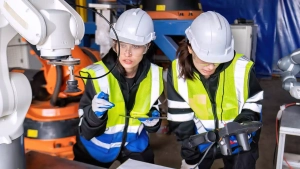Where in Berlin? Discover The Best Neighborhoods in Berlin
- Where in Berlin? Discover The Best Neighborhoods in Berlin
- 1. Living in Kreuzberg
- Pros and Cons of Living in Kreuzberg Berlin: What International Students and Young Professionals Should Know
- 2. Living in Neukölln
- Pros and Cons of Living in Neukölln Berlin: A Guide for Young Professionals and International Students
- 3. Living in Mitte
- Pros and Cons of Living in Mitte Berlin: Central Location for International Students and Young Professionals
- 4. Living in Prenzlauer Berg
- Pros and Cons of Living in Prenzlauer Berg Berlin: Ideal for Families and Young Professionals
- 5. Living in Charlottenburg-Wilmersdorf
- Pros and Cons of Living in Charlottenburg-Wilmersdorf Berlin: A Sophisticated Choice for Expats
- 6. Living in Schöneberg
- Pros and Cons of Living in Schöneberg Berlin: An Inclusive Neighborhood for Expats
- 7. Living in Friedrichshain
- Pros and Cons of Living in Friedrichshain Berlin: A Creative Hub for Young Professionals and Students
- 8. Living in Wedding
- Pros and Cons of Living in Wedding Berlin: Affordable Living for International Students and Young Professionals
- 9. Living in Moabit
- Pros and Cons of Living in Moabit Berlin: A Centrally Located Choice for Expats on a Budget
- 10. Living in Lichtenberg
- Pros and Cons of Living in Lichtenberg Berlin: Quiet and Affordable Living for Expat Families
Best Neighborhoods in Berlin for Foreigners: Berlin, the capital of Germany, is a vibrant and diverse city that has become a magnet for expatriates from around the world.
Known for its rich history, cultural diversity, and progressive atmosphere, the city offers a range of neighborhoods that cater to various tastes, lifestyles, and backgrounds. For foreigners, choosing the right neighborhood is crucial, especially for those who might be concerned about fitting in, cultural integration, and avoiding discrimination.
In this article, we’ll explore some of the best neighborhoods in Berlin for foreigners, ranked from the most to least favorable based on factors like diversity, amenities, accessibility, and overall expat-friendliness.
1. Living in Kreuzberg
Kreuzberg is a vibrant, multicultural neighborhood with a dynamic, artistic atmosphere. It’s an excellent choice for families seeking an enriching cultural environment, thanks to its numerous parks and family-friendly events. The area is well-connected via U-Bahn and bus lines, making commuting straightforward.
While Kreuzberg is lively and occasionally noisy, especially around popular spots like Oranienstraße, its buzzing energy contributes to its unique charm. The variety of international cuisine and local markets makes everyday life exciting and convenient. The diverse community fosters a welcoming atmosphere for newcomers, offering ample opportunities for families to engage in cultural and social activities.
- Diversity: Kreuzberg is home to a large Turkish and Middle Eastern community, making it one of the most culturally diverse neighborhoods in Berlin. This diversity creates a welcoming atmosphere for foreigners, particularly those from non-Western countries.
- Vibrant Culture: The neighborhood is known for its lively arts scene, street art, and alternative culture. It hosts numerous festivals, markets, and events that celebrate different cultures.
- Amenities: Kreuzberg offers a wide range of international restaurants, cafes, and shops, catering to a variety of tastes and preferences. The food scene is particularly noteworthy, with everything from traditional Turkish kebabs to vegan eateries.
- Expats’ Hub: Due to its international flair, Kreuzberg is popular among expatriates, making it easier for newcomers to connect with like-minded individuals and form social networks.
Pros and Cons of Living in Kreuzberg Berlin: What International Students and Young Professionals Should Know
Pros:
- Cultural Diversity: Rich mix of cultures, with a large Turkish and Middle Eastern community, making it welcoming for foreigners.
- Vibrant Lifestyle: Lively arts scene, street art, and numerous festivals and events.
- International Cuisine: Wide range of international restaurants and cafes catering to diverse tastes.
- Good Connectivity: Excellent public transport options including U-Bahn and buses.
- Social Networking: Popular among expatriates, facilitating easy connections for newcomers.
Cons:
- Noise Levels: The energetic atmosphere can be noisy, especially in popular areas.
- Cost of Living: Some parts of Kreuzberg can be expensive, despite the diversity of options.
- Crowded: The lively environment can lead to crowded public spaces and amenities.
2. Living in Neukölln
Neukölln, known for its youthful and trendy vibe, is perfect for families who enjoy a bustling, diverse environment. The neighborhood has a strong sense of community with numerous parks and family-centric events. It’s well-connected by public transportation, making it easy to navigate the city.
The area has a lively atmosphere, especially in its popular nightlife spots and markets, but this vibrant energy can be a plus for those who enjoy a bustling environment. Neukölln’s affordability compared to other central areas makes it attractive to families looking for a balance between cost and vibrancy. The ongoing gentrification ensures a mix of old and new, enhancing its appeal.
- Multiculturalism: Like Kreuzberg, Neukölln is incredibly diverse, with a large immigrant population. This makes it a welcoming place for foreigners, particularly those from non-Western countries.
- Young and Trendy: The neighborhood has a youthful vibe, with many bars, cafes, and galleries that attract a hip, international crowd. The nightlife is vibrant, and there’s always something happening.
- Affordable Housing: Compared to other central neighborhoods, Neukölln offers relatively affordable housing options, making it attractive to expatriates who are still finding their footing in the city.
- Cultural Integration: Neukölln’s diversity and open-mindedness make it easier for foreigners to integrate and feel at home, regardless of their background.
Pros and Cons of Living in Neukölln Berlin: A Guide for Young Professionals and International Students
Pros:
- Multicultural Vibe: Diverse population with a welcoming environment for newcomers.
- Youthful Energy: Trendy bars, cafes, and cultural events that appeal to young professionals.
- Affordable Housing: Relatively low cost of living compared to central areas.
- Cultural Integration: Easy for foreigners to integrate due to the open-minded community.
- Green Spaces: Increasing number of parks and recreational areas.
Cons:
- Noise and Activity: The vibrant nightlife can be noisy and busy.
- Gentrification: Rapid changes in the area may lead to rising costs in the future.
- Limited Quiet Areas: Despite some green spaces, finding a quiet retreat can be challenging.
3. Living in Mitte
Mitte is the heart of Berlin, offering a blend of historical charm and modern amenities, making it a great choice for families who enjoy living amidst cultural landmarks. The area is highly connected with efficient public transportation options, including U-Bahn, S-Bahn, and trams.
Although Mitte can be quite busy and occasionally noisy due to its central location and tourist attractions, its vibrant cultural scene compensates for it. Families can benefit from proximity to museums, parks, and shopping districts, providing a rich urban experience. The upscale housing and high-end shopping options cater to those seeking a more refined living environment in the city center.
- Cultural and Historical Significance: Mitte is steeped in history and culture, making it a fascinating place for expatriates who are interested in exploring Berlin’s past and present.
- High-End Living: Mitte is one of the more upscale neighborhoods in Berlin, offering luxury apartments, designer boutiques, and fine dining. It’s ideal for expatriates with a higher budget.
- International Community: Mitte has a significant expatriate community, particularly Westerners. The area’s cosmopolitan vibe makes it easy for foreigners to adapt and find a sense of belonging.
- Central Location: Living in Mitte means being at the heart of the city, with easy access to public transportation, shopping districts, and cultural attractions.
Pros and Cons of Living in Mitte Berlin: Central Location for International Students and Young Professionals
Pros:
- Central Location: Close to major landmarks, cultural institutions, and shopping districts.
- High-End Amenities: Luxury apartments, fine dining, and designer boutiques.
- Rich History: Steeped in historical and cultural significance, offering a unique living experience.
- Excellent Connectivity: Well-served by public transport, including trains and buses.
- Expat Community: Significant international presence, making it easier for newcomers to adapt.
Cons:
- Cost of Living: One of the more expensive neighborhoods in Berlin.
- Crowded: Central location can lead to crowded streets and public spaces.
- Less Quiet: The bustling atmosphere may not suit those seeking a peaceful environment.
4. Living in Prenzlauer Berg
Prenzlauer Berg is known for its picturesque, tree-lined streets and historic charm, making it highly appealing for families. The area offers excellent schools, playgrounds, and green spaces like Mauerpark, perfect for children. Public transportation is reliable, with several U-Bahn and tram lines connecting the neighborhood to other parts of Berlin.
Prenzlauer Berg is quieter and safer compared to some other neighborhoods, adding to its family-friendly appeal. The gentrification has brought boutique shops and organic markets, enhancing the area’s charm while ensuring that it remains a pleasant place to live. The strong expatriate community provides support for newcomers adapting to Berlin life.
- Family-Friendly: Prenzlauer Berg is particularly popular among expatriates with children, thanks to its excellent schools, playgrounds, and green spaces.
- Gentrified and Safe: The neighborhood is one of the safest in Berlin, with a high standard of living. It’s ideal for those seeking a quieter, more upscale environment.
- Expatriate Community: Prenzlauer Berg has a substantial expatriate population, particularly Westerners, which makes it easier for newcomers to find community and support.
- Boutique Living: The area is dotted with boutique shops, organic markets, and artisan cafes, catering to those who appreciate a more curated lifestyle.
Pros and Cons of Living in Prenzlauer Berg Berlin: Ideal for Families and Young Professionals
Pros:
- Family-Friendly: Excellent schools, playgrounds, and green spaces ideal for families.
- Safe and Quiet: One of the safer and quieter neighborhoods in Berlin.
- Boutique Lifestyle: Abundance of boutique shops, organic markets, and artisan cafes.
- Green Environment: Numerous parks and recreational areas enhance quality of life.
- Strong Expat Community: High concentration of expatriates, particularly Westerners.
Cons:
- Higher Cost: The gentrified nature of the area means higher living costs.
- Limited Nightlife: Less vibrant nightlife compared to other neighborhoods.
- Crowded at Times: Popularity can lead to crowded local spots and amenities.
5. Living in Charlottenburg-Wilmersdorf
Charlottenburg-Wilmersdorf is an elegant district offering a refined living experience with its wide boulevards and historic architecture. It’s ideal for families seeking a sophisticated, upscale environment. The area is well-connected with extensive public transport options, including U-Bahn and S-Bahn lines, facilitating easy access to other parts of Berlin.
While the district is more tranquil and less bustling than some central neighborhoods, its cultural attractions, such as Charlottenburg Palace and various museums, provide plenty of engagement opportunities. The upscale environment and high-end amenities cater to expatriates who appreciate a luxurious lifestyle and a traditional, polished neighborhood ambiance.
- Upscale Environment: Charlottenburg-Wilmersdorf offers a luxurious living experience, with grand apartments, high-end shopping, and fine dining options. It’s ideal for expatriates who enjoy a more sophisticated lifestyle.
- Cultural Attractions: The neighborhood is home to some of Berlin’s most famous cultural sites, including the Charlottenburg Palace and the Berlin Opera House. It’s perfect for expatriates who appreciate art and culture.
- Well-Connected: The area is well-connected by public transport, making it easy to access other parts of the city.
- Western Expatriates: Charlottenburg-Wilmersdorf is popular among Western expatriates, particularly those from older generations, offering a more familiar environment for newcomers from Western countries.
Pros and Cons of Living in Charlottenburg-Wilmersdorf Berlin: A Sophisticated Choice for Expats
Pros:
- Upscale Living: Elegant architecture, luxury apartments, and high-end shopping.
- Cultural Attractions: Home to cultural landmarks like Charlottenburg Palace and Berlin Opera House.
- Well-Connected: Excellent public transport options for easy city access.
- Sophisticated Atmosphere: Refined environment ideal for those seeking a sophisticated lifestyle.
- Familiarity for Westerners: Appeals to Western expatriates looking for a familiar setting.
Cons:
- High Costs: One of the more expensive neighborhoods in Berlin.
- Less Trendy: May lack the youthful, vibrant energy found in other areas.
- Limited Nightlife: Less nightlife and alternative cultural activities compared to other neighborhoods.
6. Living in Schöneberg
Schöneberg is a vibrant and inclusive neighborhood with a strong LGBTQ+ presence. Its lively markets, diverse community, and range of cafes and restaurants contribute to its dynamic atmosphere. Families will find plenty of green spaces and schools, making it a practical choice for those with children.
Schöneberg is well-connected with public transportation options, offering easy access to other parts of Berlin. The blend of traditional charm and modern amenities ensures a balanced lifestyle, while its community spirit provides a welcoming environment for expatriates.
- LGBTQ+ Friendly: Schöneberg has a strong LGBTQ+ presence, making it one of the most inclusive neighborhoods in Berlin. It’s an ideal place for expatriates who value diversity and inclusion.
- Diverse Community: The neighborhood is home to a mix of cultures and nationalities, making it a welcoming environment for foreigners.
- Charming Atmosphere: Schöneberg offers a blend of traditional Berlin charm with a modern twist. Its markets, cafes, and green spaces provide a relaxed yet vibrant lifestyle.
- Good for Families: With its parks and schools, Schöneberg is also a good choice for expatriate families.
Pros and Cons of Living in Schöneberg Berlin: An Inclusive Neighborhood for Expats
Pros:
- LGBTQ+ Friendly: Inclusive and welcoming atmosphere for diverse communities.
- Cultural Mix: Rich blend of traditional charm with modern amenities.
- Green Spaces: Parks and recreational areas offer a balanced lifestyle.
- Diverse Community: Strong sense of community with a variety of cultures.
- Good for Families: Amenities and schools make it suitable for families as well.
Cons:
- Noise Levels: Can be lively, especially in busy market and nightlife areas.
- Higher Living Costs: Some parts may be pricier compared to less central neighborhoods.
- Less Central: Further from the city center, which may be a downside for those who prefer proximity to major attractions.
7. Living in Friedrichshain
Friedrichshain is a hub of alternative culture and creativity, ideal for younger expatriates and students. The neighborhood’s energetic nightlife, with numerous clubs and bars, creates a vibrant atmosphere that can be both exciting and busy.
Families will appreciate the area’s parks and recreational facilities, though the lively social scene might be more suited to those who enjoy a bustling environment. Friedrichshain is well-connected by public transport, making it easy to explore Berlin. Affordable housing options make it an attractive choice for newcomers looking for a dynamic and creative living space.
- Youthful and Creative: Friedrichshain is a hub for Berlin’s alternative culture, with a strong emphasis on creativity and self-expression. It’s ideal for younger expatriates who want to immerse themselves in the city’s underground scene.
- Vibrant Nightlife: The neighborhood is famous for its clubs, bars, and music venues, making it a great place for those who enjoy an active social life.
- Affordable Housing: Despite its popularity, Friedrichshain still offers relatively affordable housing options, particularly for shared apartments.
- Expanding Expat Community: While not as international as Kreuzberg or Neukölln, Friedrichshain is becoming increasingly popular among expatriates, making it easier for newcomers to settle in.
Pros and Cons of Living in Friedrichshain Berlin: A Creative Hub for Young Professionals and Students
Pros:
- Creative Atmosphere: Hub for alternative culture and artistic expression.
- Vibrant Nightlife: Numerous clubs, bars, and music venues for an active social life.
- Affordable Housing: Relatively lower housing costs compared to more central areas.
- Youthful Vibe: Popular among young professionals and students.
- Expanding Expat Community: Increasingly welcoming for newcomers.
Cons:
- Noise and Activity: Lively nightlife can lead to noisy streets and public spaces.
- Less Family-Oriented: May not be ideal for families due to the vibrant, bustling atmosphere.
- Crowded: Popularity can result in crowded local spots and amenities.
8. Living in Wedding
Wedding offers a more authentic Berlin experience with its diverse population and burgeoning arts scene. The neighborhood’s affordability makes it a great option for expatriates and artists on a budget.
Families will find a range of local amenities, though the area is less gentrified compared to more central neighborhoods. Public transport links are good, providing easy access to the rest of Berlin. Wedding’s multicultural vibe and community-oriented atmosphere create a welcoming environment for newcomers, offering a blend of cultural richness and affordable living.
- Affordable Living: Wedding is one of the more affordable neighborhoods in Berlin, making it attractive to expatriates on a budget.
- Diverse Population: The neighborhood is home to a mix of cultures, including a significant Turkish and Arab community, which contributes to its multicultural vibe.
- Artistic Vibe: Wedding is known for its burgeoning arts scene, with many artists and creatives moving into the area due to its affordability.
- Less Gentrified: Unlike some of the more central neighborhoods, Wedding is less gentrified, offering a more authentic and unpolished Berlin experience.
Pros and Cons of Living in Wedding Berlin: Affordable Living for International Students and Young Professionals
Pros:
- Affordable Living: Lower cost of living makes it attractive for those on a budget.
- Diverse Community: Multicultural atmosphere with a mix of cultures.
- Artistic Scene: Emerging arts scene with many creatives moving in.
- Community Feel: Strong local community and neighborhood initiatives.
- Good Transport Links: Access to public transport for easy city commuting.
Cons:
- Less Gentrified: Can be less polished compared to more central neighborhoods.
- Noise Levels: Certain areas might be noisy due to ongoing development and activities.
- Limited Amenities: Fewer high-end amenities and entertainment options compared to other neighborhoods.
9. Living in Moabit
Moabit, located just west of Mitte, provides a centrally located yet affordable alternative for expatriates. The neighborhood’s diversity and strong sense of community make it an inclusive and welcoming place to live. Moabit is well-served by public transport, ensuring convenient access to Berlin’s main attractions and amenities. While it is less bustling than some other central areas, its affordable housing and community-driven atmosphere make it an attractive option for those seeking a more grounded, authentic Berlin experience.
- Centrally Located: Moabit is just west of Mitte, making it a convenient location for those who want to be close to the city center without paying Mitte prices.
- Affordable Housing: The neighborhood offers relatively affordable housing options, making it a good choice for expatriates who want to live centrally but are on a budget.
- Diverse and Inclusive: Moabit has a diverse population, including many immigrants, which creates a welcoming environment for foreigners.
- Community-Oriented: The neighborhood has a strong sense of community, with many local initiatives and projects that bring residents together.
Pros and Cons of Living in Moabit Berlin: A Centrally Located Choice for Expats on a Budget
Pros:
- Central Location: Conveniently located near Mitte for easy access to city attractions.
- Affordable Housing: Lower housing costs compared to more central areas.
- Diverse Population: Inclusive and welcoming environment for foreigners.
- Strong Community: Active local initiatives and community projects.
- Good Connectivity: Well-served by public transport, making commuting easy.
Cons:
- Less Vibrant: May lack the lively atmosphere found in more central or trendy neighborhoods.
- Noise and Activity: Some areas may experience noise from ongoing developments.
- Limited High-End Amenities: Fewer luxury options compared to upscale neighborhoods.
10. Living in Lichtenberg
Lichtenberg is a quieter, more residential neighborhood, ideal for expatriates seeking a peaceful environment. Its affordability and spacious housing options are perfect for families and those looking for a more suburban feel.
The area offers a range of parks and green spaces, providing a calm escape from the city’s hustle and bustle. Although less international than other neighborhoods, Lichtenberg’s friendly atmosphere and good public transport connections make it a practical choice for those who value tranquility and space.
- Residential and Quiet: Lichtenberg is primarily a residential area, making it ideal for expatriates who prefer a quieter, more suburban lifestyle.
- Affordable and Spacious: The neighborhood offers affordable housing, often with more space than what you would find in more central areas.
- Less International: Lichtenberg is not as international as other neighborhoods, which might make it less appealing to expatriates looking for a more cosmopolitan environment.
- Green Spaces: The area is home to several parks and green spaces, providing a peaceful escape from the hustle and bustle of the city.
Pros and Cons of Living in Lichtenberg Berlin: Quiet and Affordable Living for Expat Families
Pros:
- Quiet and Residential: Peaceful, suburban-like environment suitable for those seeking calm.
- Affordable Housing: Offers more space and lower costs compared to central areas.
- Green Spaces: Abundant parks and recreational areas.
- Good Value: Provides a balance of affordability and quality of life.
- Family-Friendly: Suitable for families due to its tranquil and spacious environment.
Cons:
- Less International: Not as cosmopolitan as other neighborhoods, which might be a downside for some expatriates.
- Distance from Central Attractions: Further from the city center and major cultural landmarks.
- Limited Nightlife: Fewer nightlife options compared to more vibrant areas.
Berlin is a city of contrasts, offering a wide range of neighborhoods that cater to different lifestyles, preferences, and budgets. For foreigners, especially those concerned about discrimination and cultural integration, the choice of neighborhood can significantly impact their experience in the city.
Kreuzberg and Neukölln stand out as the best neighborhoods for foreigners due to their multicultural environments, vibrant communities, and welcoming atmospheres. Mitte and Prenzlauer Berg offer more upscale living with a strong expatriate presence, while Charlottenburg-Wilmersdorf provides a sophisticated, Western-friendly environment. Schöneberg, with its inclusivity and charm, is ideal for those who value diversity, while Friedrichshain appeals to younger expatriates with its creative and alternative scene.
For those on a budget, Wedding and Moabit offer affordable living in diverse and community-oriented neighborhoods, while Lichtenberg provides a quieter, more residential option. Each of these neighborhoods has its unique charm and character, making Berlin a truly international city where foreigners can find a place that feels like home.
How informative was this article?
Click on a star to rate it!
We are sorry that this post was not useful for you!
Let us improve this post!
What is missing in the article?















